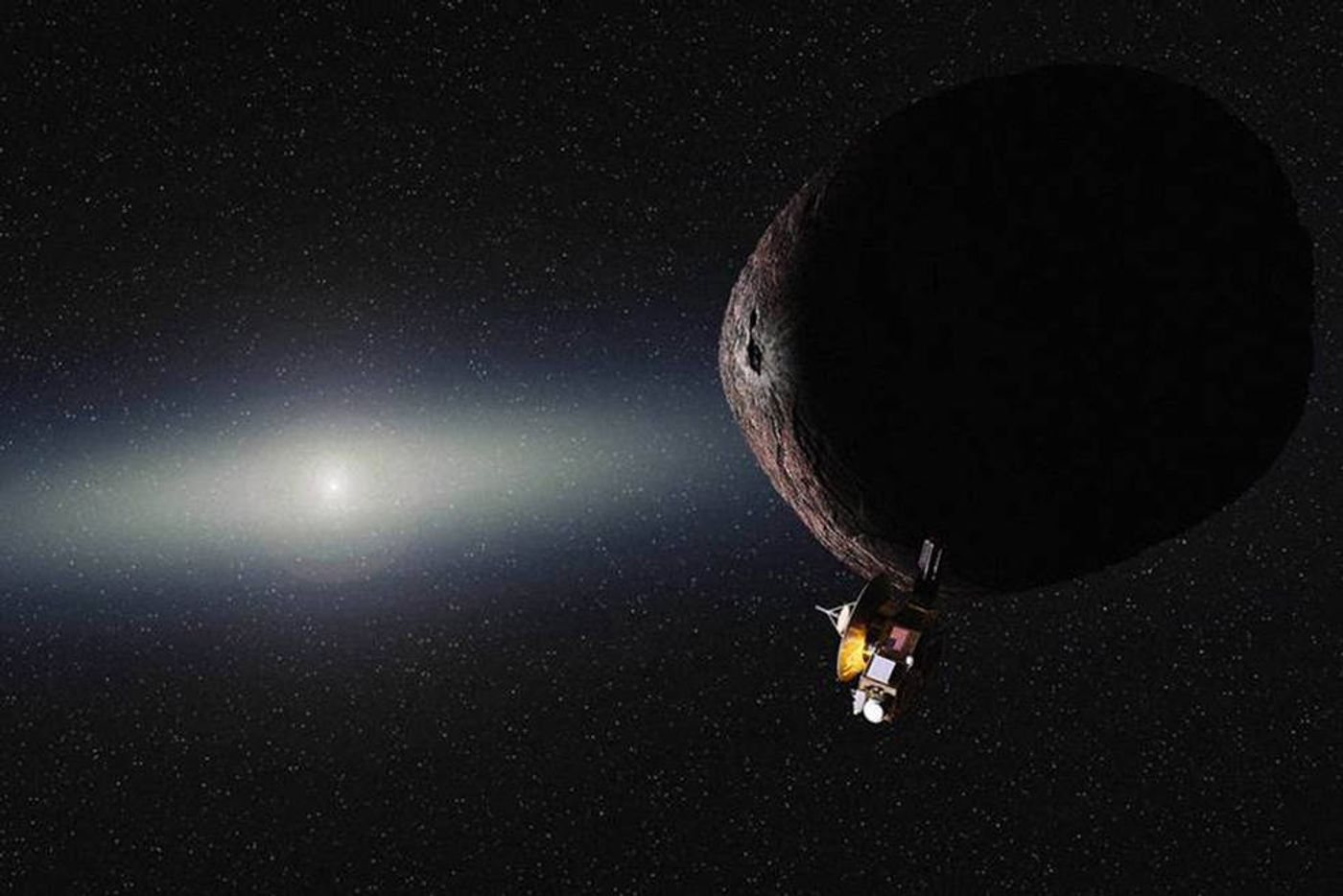NASA Scientists Spot Occultation Caused by a Future New Horizons Target
New Horizons made history when it completed the primary goal of flying past Pluto in 2015, but the probe is far from finished exploring. Last year, NASA decided a distant Kuiper Belt Object (KBO) dubbed 2014 MU69 would become the probe’s next flyby target, and scientists are eager to use this flyby to learn more about objects in the Kuiper Belt.
Image Credit: NASA/JHUAPL/SwRI/Alex Parker
In three separate observations, scientists from NASA’s New Horizons team set out to find 2014 MU69 by way of ground-based mobile telescopes. To spot it, they were taking advantage of a phenomenon known as an occultation, which is when the KBO passes in front of a distant star and causes the light from that distant star to disappear momentarily.
On Sunday, July 17th, NASA scientists got lucky and spotted what they were looking for in their third observation. After setting up their telescopes in Argentina and focusing them all on one region of the sky, they successfully captured the occultation caused by 2014 MU69.
In the video below, you can see how the star in the middle of the frame seems to “disappear” from view for a fraction of a second; 2014 MU69 caused this to happen by obstructing our line of sight with the unnamed star.
Related: These KBOs tell us Neptune's formation was smoother than originally thought
Although these tiny telescopes can’t get the close-up details we’d expect from a probe flyby, scientists can still use these observations to determine 2014 MU69’s color, size, and whether it has any satellites; these are pressing mysteries that scientists want to solve.
Knowing these details ahead of time can better prepare NASA for the flyby. For example, New Horizons' NASA will need to adjust New Horizons' imaging equipment for more exposure if 2014 MU69 has a darker surface; conversely, the imaging equipment will be configured with less exposure if 2014 MU69 has a lighter surface.
The local Argentinian community worked closely with the scientists to make the observations possible. Major highways were shut down, street lights were turned off, and large freight trucks were parked around the crew to block out light that could interfere with the research.
New Horizons will fly past 2014 MU69 on January 1st, 2019, providing humanity with the first-ever close-up images of a Kuiper Belt Object. 2014 MU69 will also become the most distant object ever observed by any spacecraft.
There are indeed exciting times ahead in space exploration. We can't wait to see what becomes of the research as a whole.
Source: NASA









